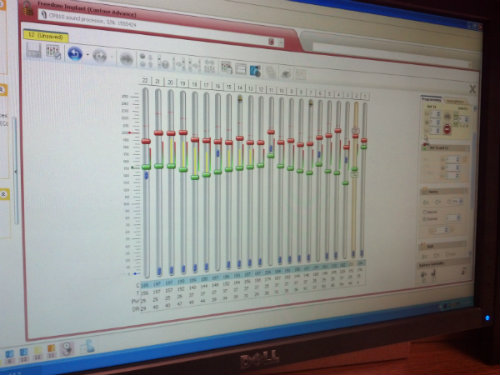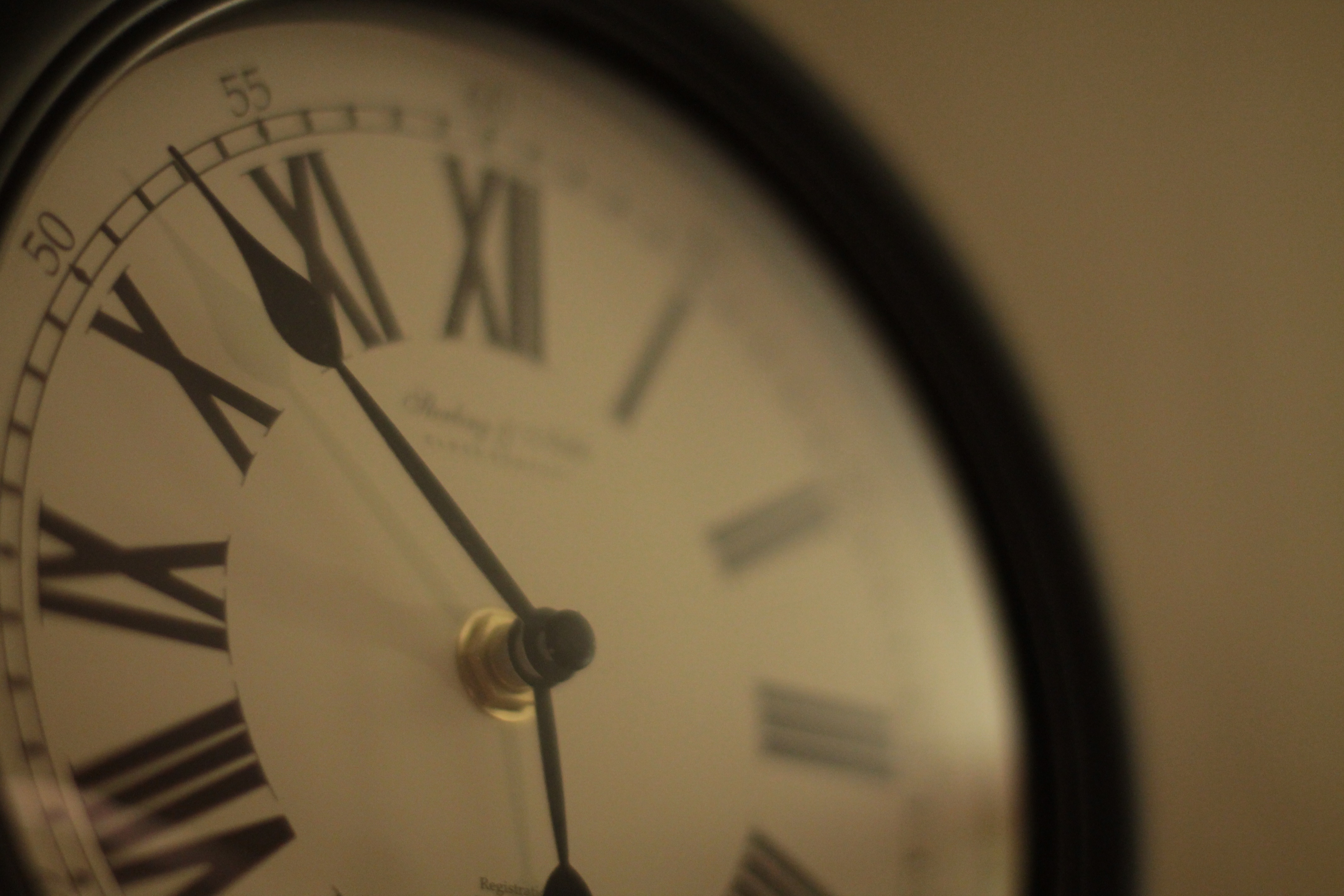Monday February 8 – Week two of the activation / programming process.
I headed back to Quebec City that morning and arrived in time for my afternoon appointment at the Institut de réadaptation en déficience physique de Québec(IRDPQ), where I had my audiology test and psychological evaluation prior to getting the surgery. You can read about these evaluations here.
I met Audrey, the audiologist who was going to do some tests to try to determine which electricity speed I hear best with. Read my previous post to understand how electricity pulse rate affects a CI.
First, she asked me to report on how I was hearing. The “minion” sounds were now gone – I understood all sounds and words, but things still sounded robotic. When people spoke, it sounded as if it coming from a recorded device, like an answering machine. But at least I could understand what they were saying.
Over weekend, I listened to as many things as I could. I managed to have some short phone conversations and catch some things on the TV and radio. Things sounded robotic and distant, especially if the phone/speakers weren’t good.
Audrey took notes and got ready to do some word recognition tests. “I have the french tests…is that ok?”
I told her it was fine, and she seemed relieved. She pulled out a list that had about 50 words on it and had me put my CI on program 1, which was the slowest speed.
She covered her mouth so that I can’t lipread and told me to repeat each word after her.
– ”Maison,” she said.
– ”Maison,” I repeated
– ”Dimanche.”
– ”Dimanche.”
– ”Menton.”
– ”Manteau.”
– ”Caroline”
– Huh, I thought? A word that sounded like ‘Caroline?’ “…pardon?”
– “Yeah..it’s a bit different…a name.”
– “Oh, I thought so. Caroline?”
We did this for all the programs. Generally, I got most of them, except for some words that sounded very similar – for example I thought menton was manteau or marteau, and that chapeau was chateau. I got from 75% – 95% on the some programs and 100% on program 3, which was one of the medium speed ones (900 pps).
“I think we need to make it a bit harder,” said Audrey. “Shall we try sentences?” I told her to go ahead.
– “Mon voiture est noire.”
– “Mon voiture est noire.”
– “Je n’aime pas la bière!”
-(making a face) “Je n’aime pas la bière!” (I don’t like beer.)
She made me repeat about 30 sentences on each program. Again, I got about the same results, but sometimes I would get a couple of words wrong, as I sometimes had to guess what the word was.
“I think you’re doing best on program 3,” she told me. “but it’s really hard to tell because all the results are so close…”
So she made me do some sentence recognition test with a recording. She played sentences from her computer, which of course made things a bit harder. But, good thing that the speakers were loud and clear. I could understand most sentences, but sometimes, I would only get the first and last few words. Sometimes, I was able to identify the words just by hearing the length/tone of the words I couldn’t hear clearly.
My scores with this test ranged a bit lower, from 65% to 85% which still surprised Audrey since this was only my second week with the CI. She explained that she and Joanie would make a decision on what the best speed was for me that afternoon.
Tuesday, February 9 – Day 6
Another early day at the hospital. Joannie showed me my test scores from the previous day, and it turns out that I got an average of 80%. “Most people usually reach this score at the end of the their rehab sessions, and some don’t even come near it,” she explained. “With your rehab, you might be able to bring the scores up to a 100%!”
She decided to keep program 3, and deleted the rest of them.
“We’re going to test another thing today. We tested electrode speed, and now that we have the right speed, we’re going to test electrode peaks.”
When the CI receives sounds and sends them to the electrode array, not all the electrodes work at the same time. Depending on the sound, 8 of the electrodes become activated and work together to produce that sound.
As you can see in the picture below, there are 8 bars highlighted in yellow. This is how 22 electrodes try to “replicate” the job of 35 000 hair cells that no longer function.

However, studies have shown that not everyone obtains the same results with 8 active electrodes. The CI can be programmed to alter this, and some people perceive speech better with 10 or even 12 electrode peaks. You can read an abstract published by the National Center for Biotechnology Information here.
So with the CI now set to push sound in at an electrical rate of 900 pps, we were going to test how many electrode peaks my CI should be programmed at.
So we did some tests where I compare volumes, similar to what I did in this post. Then, she added more programs:
Program 1: 8 peaks
Program 2: 10 peaks
Program 3: 12 peaks
Program 4: 8 peaks, with no automatic noise reduction (will explain this in a future post).
Again, as with all testing, it was hard to tell the difference and identify which ones I was hearing better with. I noticed that with 12 peaks, things sounded even more robotic and not as clear. This was hard to test, because the best way to test sounds is to keep it at the same program for a few days in a row and really take notes on what everything sounds like.
That afternoon, I went back to the IRDPQ and Audrey did some more tests with me. This time, we did the same exam that I did during my pre-surgery evaluations – word and sentence recognition tests in the audiology booth.
As I wrote then, I failed the test with a score of 30%, which made me eligible for a CI. Today, my scores ranged from 67% to 90% – and some of them had background noise added to make them more challenging! As I predicted, the 12-peak program gave me the lowest score, so we eliminated this one right away.
Next: Final programming and last day in QC
Help me spread knowledge about CIs! Like my Facebook page and share these posts from there.









Recent Comments